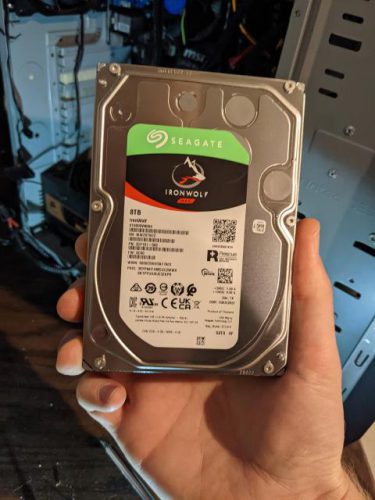
One recurring theme on this blog has been encouraging you to back up your data. Imagine going home and one of the devices in your house is completely and irrecoverably dead. How much do you lose? Are those family photos gone forever? The strategy I recommend is a 3-2-1 strategy: keep three copies of the data stored in at least two places with one of them being offsite.
If you don’t have this today, you can remedy that very easily by going to backblaze.com and paying them to keep an encrypted copy of all your data. They aren’t sponsoring this post, but I’ve used them for ~4 years now both here and at church and I’ve been satisfied. The key features for me are that it runs automatically in the background and there are no limits on how much data you can store which is good because I currently have 5TB stored on their servers.
Since I recently updated my setup at home, I thought I’d give another overview of my setup. We have a central server in the house that runs Blue Iris (security cameras), TeslaMate (Tesla data capture), and Plex (video streaming). It also serves as our file storage. All our computers use that server for file storage. Backblaze is running on that server to keep everything backed up to the cloud. Our phones also have everything backed up to the cloud through services like Google Photos and OneDrive, but periodically I take the photos off the phones and put them on the file server so the full resolution copies are backed up too.
The file server is a bit complicated though. We have about 7TB of data on it, and I don’t trust having all that data on a single drive because I’ve had a handful of drive failures over the years. Sure, it’s backed up to the cloud, but the goal is to never have to resort to the cloud backup. So our file server uses a feature of Windows called “Storage Spaces.” I shove various drives into the machine and then it is configured to keep each file on two different drives. I previously had four 4TB drives (giving me 8TB of duplicated storage) but we were hitting the limits of that setup so I swapped out two of the drives for 8TB drives. (Pro tip if you’re going to use Storage Spaces: leave one port open so that when you get a new drive, you can plug it in and then decommission the old drive. I’ve also done it where I just pull a drive out and tell Windows that it is dead, forcing it to rebuild on the new drive, but that’s a lot messier and riskier.)
When I upgrade drives in the file server, I take the old ones and put them in external enclosures. The Silverstone tool-less enclosure is the best one that I’ve used. These drives get another copy of all our files and they are protected by BitLocker. When I worked in the office I would keep them in my desk at work. I wouldn’t pay to add this layer of protection, but it gives me something to do with the drives that are retired from the file server.
As I mentioned at the beginning, you don’t have to get this fancy to protect your data, but you do need to make sure you’re protecting your data. When (not if) one of your hard drives fail, you don’t want to be bummed that you’ve lost things you can never get back.
Disclosure: I don’t work on the Windows team, but I do work at Microsoft.
